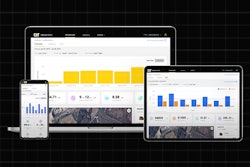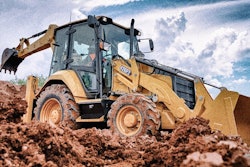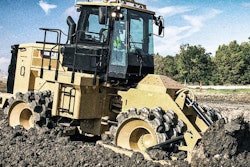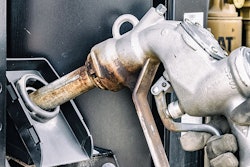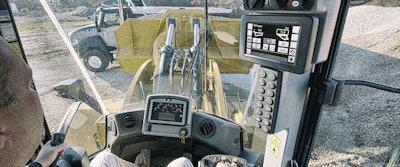
Loader size. Truck size. Bucket size. Site layout. Underfoot conditions. They all affect how much fuel your load-and-haul operation burns. But one of the biggest contributors to fuel efficiency (or lack thereof) is the operator behind the controls of your wheel loader. Fuel efficiency can vary between different operators using the same equipment in the same application.
Good operators know every movement counts. And even small movements can add up, resulting in slower cycle times and wasted fuel. Here are seven truck-loading tips to share with your loader operators to make sure they’re getting the most out of every drop of fuel they burn.
1. Engage the material at the bottom of the pile, then slowly curl the bucket and lift the boom arms until you reach the top.
This technique doesn’t just help reduce fuel burn — it can also help you avoid expensive component damage, wheel spin and tire wear.
2. Be loaded and in position when the truck approaches.
Always make sure your loader is straight, not articulated, when you dig into the face — that puts less stress on the machine.
3. Stay in first gear while loading.
First gear provides the best balance between ground speed and hydraulic speed. Feel like you need to use second gear? You may be too far away from the face or the truck — move closer.
4. Work left to right to create a pocket for the truck to back up to you at a 45° angle.
If you have to make 180° turns every pass to move your loader perpendicular to the truck, you slow down cycle times and waste fuel. A 45° angle lets you make a tight V-pattern between the material, your pivot and the truck. Your tires should rotate no more than 1-1.5 times in both directions. The shorter the rotations, the better. Note: When parallel digging, which usually requires a right-to-left advance instead, spot the truck 15°-20° from perpendicular to set up your V-pattern. Then follow these same techniques.
5. Don’t quite complete your turn when you approach the truck.
Instead, leave your loader slightly articulated, about 5°. That way, when you drop into reverse, you're already in your turn. Bringing your pivot point closer to the face can shave off as much as a second each cycle.
6. Center the material in the truck body as you load.
If you’re working with large rocks, try to start with at least one bucket of smaller material on the first pass. That cushions the larger rocks to come.
7. Take advantage of the technology.
Today’s loaders come with multiple features to help maximize operating efficiency. A few examples: Eco mode maintains first gear rimpull and torque, so you can load the bucket quickly while digging in the pile. There’s no effect on cycle times, but there can be a significant reduction in fuel use. Autodig allows the machine to control most of the dig cycle, optimizing engine rpm and torque for fuel savings. And on-the-go weighing systems — like Cat Payload, which can speed cycle times up to 10% — help you get the right load on board every time.
Interested in more truck-loading tips that can help your operation save fuel and improve productivity? Check out these suggestions for your excavator operators.





